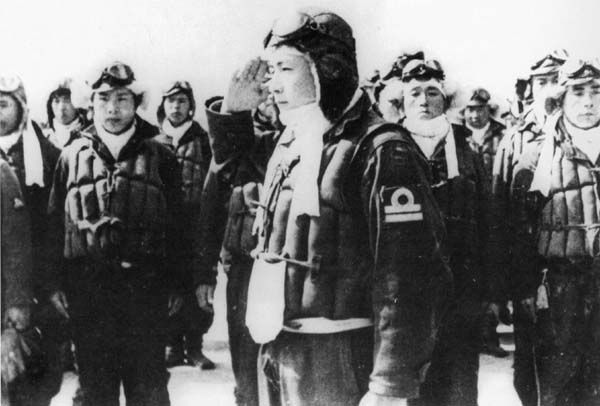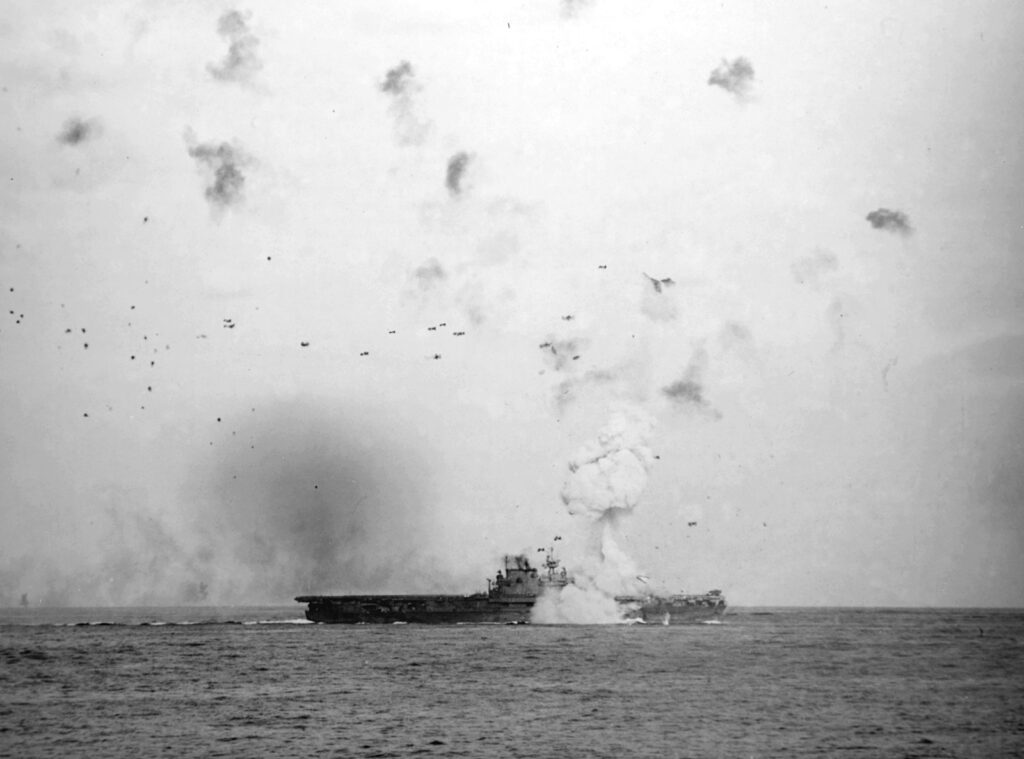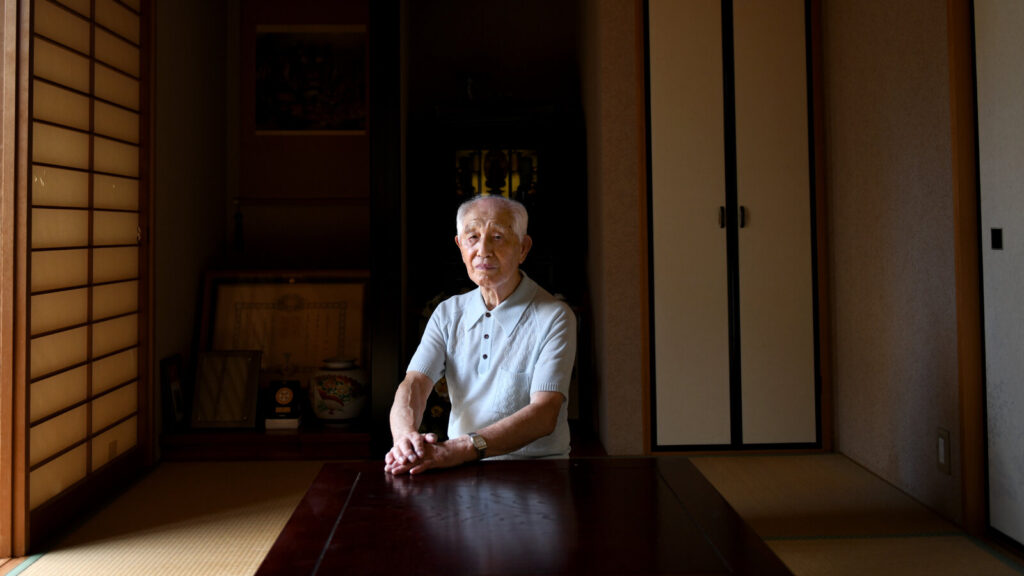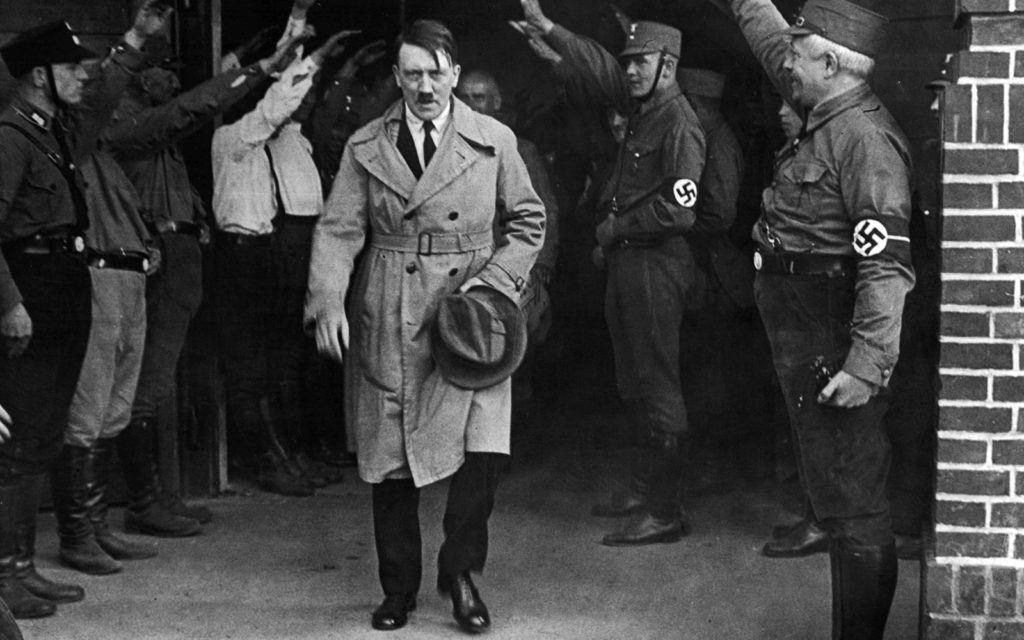Last updated on February 28th, 2024 at 02:53 am
Desperate times called for desperate measures for Japan at the end of 1944. The Americans were sweeping through the Pacific, winning battle after battle.
They were destroying Japanese warships in the process. Japan’s air commanders proposed that the pilots turn their planes into bombs. The objective was to crash into American warships and aircraft carriers and deplete their ability to wage war.
These suicide bombers, called kamikazes, mostly volunteered their services to sacrifice themselves to help Japan defeat the Americans. While the efforts were effective in damaging US ships, they didn’t change the tide of the war.
In fact, it led to the eventual use of the atomic bomb and Japan’s unconditional surrender.
But what if a kamikaze pilot didn’t want to give their life up for their country? What if they went to perform the mission and had a change of heart, ultimately deciding to turn for home?
Or what if they had a mechanical failure and couldn’t give themselves up? Each scenario came with different consequences.

The Start of Kamikaze Missions
For the first 18 months, the war was going Japan’s way. They were pushing the United States back, even taking the Philippines in early 1942.
But then Midway arrived, and the US turned the tide with a decisive victory. From there, it went downhill for Japan. In 1944, things completely spiraled out of control when the US took the Marshall Islands.
The Americans were destroying Japanese ships at incredible levels. They were killing pilots in the air. Japan was simply failing to stop the American offensive.
They were losing more pilots than they could train. They simply could not keep up.
By October 1944, the only way to keep the war going was to take drastic steps to eliminate American planes and weapons. It would prove fatal for both sides.
Japanese Naval captain Motoharu Okamura claimed, “I firmly believe that the only way to swing the war in our favor is to resort to crash-dive attacks with our planes…. There will be more than enough volunteers for this chance to save our country.”
Okamura sought volunteers, and many came forward, some by coercion, others by choice. A lot of Japanese pilots saw it as an honor to die for their country. They became warriors, and they were looked at with the highest respect by the country and its leaders.
They got the best treatment, including the best food rations. But the training they had to go through was rigorous. Before each mission, these pilots would have a drink of Sake and eat rice before boarding the plane.

Prior to taking off, the planes had maximum fuel because that would create a more significant explosion. Thus, any rumors that they were given little fuel as an incentive not to return home were false. They also had the heaviest bombs on board you could find, adding to the damage.
When in the air, the pilots turned themselves into human bombs. But while these kamikazes were effective at damaging US ships, they also were losing their own pilots and planes in the process.
It was a lose-lose situation for each side. The first kamikaze mission happened on Oct. 25, 1944, in the Battle of the Leyte Gulf.
During the Battle of Okinawa, more than 1,900 kamikaze pilots were assigned to crash into U.S. ships from April to June 1945, the most of any battle in the war. As a result, more than 300 U.S. ships were damaged or sunk, and nearly 5,000 Allied sailors were killed.
Pilots Who Returned Home
Pilots who returned home from their mission were put into two groups.
The first group of pilots were those who couldn’t complete their mission because they had a mechanical issue that forced them to return home. Or possibly because the weather conditions deterred them from seeing the target.
As long as they could prove their reasoning, they were given the benefit of the doubt and not punished. Their kamikaze mission was rescheduled.
Also included in this group were pilots who couldn’t carry their missions out because they were spotted by their enemy. Some were instructed to return home by their superior officers.
Kamikaze missions were meant to be done in secret. If the Americans saw them, they could shoot down the plane well before it hit their target, resulting in a failure.
However, there was also the group of pilots who psychologically could not go through with the mission. While they weren’t executed for not completing it, they were punished, sometimes harshly.
They were called cowards and put through mental and physical torture at times. Their families also were beaten, an incentive for these pilots not to fail the next go around. One pilot failed nine times and was eventually executed.
The “cowards” were put in squadrons to increase the peer pressure on them to perform their task the second time. By being in a squadron, they couldn’t fly away and disappear. They always had eyes on them.
Some pilots ejected themselves before the planes hit, a last-second fear of dying. Most of these pilots still ended up losing their lives regardless.
However, there were a few select that survived, and were taken as a Prisoner of War. They were eventually released after the war.
Were All Kamikazes Volunteers?
One of the biggest false narratives that came from Japan is that all pilots volunteered their lives to become kamikazes and die for their country.
In the later stages of the war, many Japanese pilots were forced to volunteer with no alternative. They had no choice in their assignment.
Even men who didn’t want to serve were given very little training and asked to turn themselves into human bombs. They were trained on how to take off, but not how to land.
Some were given incentives and rewards for volunteering themselves. While others were threatened with severe punishment if they refused to comply with orders.
This included harsh treatment of their families, which in essence forced some to volunteer, out of fear their loved ones would be killed. In the end, they had no choice but to comply with orders.
Kazuo Odachi was one of the few kamikaze pilots who survived and lived to tell the story. In his memoir, he wrote that Japanese officers were met with “stunned silence” when they explained the suicide mission and asked for volunteers.

Only after threats were made did volunteers begin to come forward. “We were essentially cajoled into committing suicide,” Odachi recalled.
Odachi was fortunate in that many of his suicide missions were called off either before takeoff or while they were in the air. Sometimes they failed to find a target, while other times his squadron was spotted and had no choice but to return home.
Just before his final mission, Japan had surrendered and he had survived the war.
According to the United States Strategic Bombing Survey, more than 2,500 kamikaze missions were attempted. Most of those happened in the Battle of Okinawa, as previously indicated.
Just under 20 percent of these missions achieved success. While the other 80 percent either resulted in failed missions or the US successfully shooting down the planes before they hit the target.
References
“Kamikaze Pilots.” History.Navy.mil. Nd. https://www.history.navy.mil/content/history/museums/nmusn/explore/photography/wwii/wwii-japan/kamikaze/pilots-kamikaze.html#:~:text=The%20name%20was%20resurrected%20from,before%20flown%20into%20their%20targets.
Aneculaesei, Calin. “What Happened When a Kamikaze Pilot Returned?” HistoryofYesterday.com. 12 Sep 2022. https://historyofyesterday.com/what-happened-when-a-kamikaze-pilot-returned/
Dooley, Ben. “He Escaped Death As a Kamikaze Pilot. 70 Years Later, He Told His Story.” New York Times. 15 Dec 2020. https://www.nytimes.com/2020/12/03/world/asia/japan-kamikaze.html
“Who Were the Fanatical Kamikaze Pilots of WWII and How Deadly Were They?” HistorySkills.com. Nd. https://www.historyskills.com/classroom/year-10/kamikaze/

